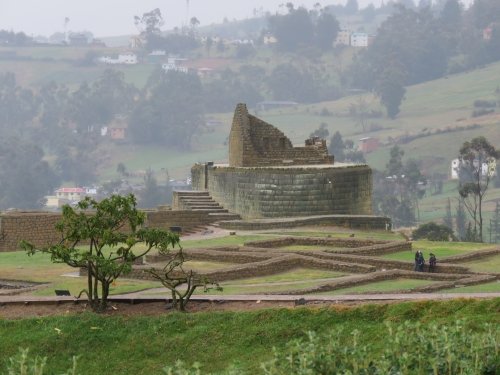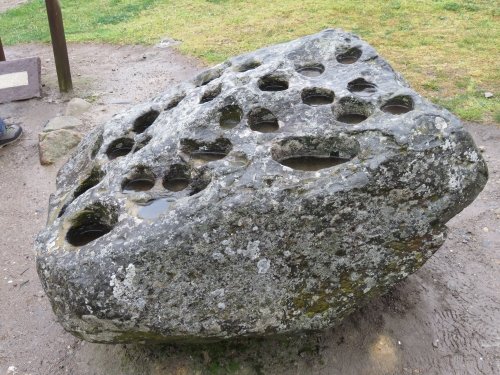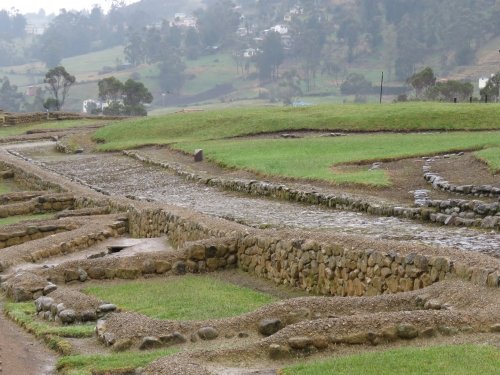The Inca road network
Qhapaq Nan
consists of many sections. One of these is called “Achupallas-Ingapirca”, and it lies in the provinces of Chimborazo and Cañar in the southeast of Ecuador. Like all other inscribed sections, it comprises a stretch of road and associated sites. Parts of the original path are still accessible: there is a
3-day / 40km long trail
that can be arranged to cover it. I just visited one of the associated sites, Ingapirca.

Temple of the Sun
The Inca started to expand their empire northwards into Ecuador from Peru only from 1463. They met with a lot of resistance, notably from the Cañari people who were local to the area around Cuenca. The interesting feature of Ingapirca is that it is a mixed Cañari – Inca site. The Inca Túpac Yupanqui ended up marrying a Cañari princess, and the two groups reputedly lived together peacefully afterwards although they kept their own customs. The guides that accompany visitors to the archaeological site identify themselves as indigenous Cañari, and they are happy to point out especially these remains.
The Cañari worshipped the moon, and the remains of their Temple of the Moon cover the first plateau at the site. There’s an interesting communal tomb in front of it, with a vertical monolith on top. Here a woman of high social class was buried together with 10 other men and women who – according to the guide – were sacrificed alive. A bit further into the complex a rock with holes in it represents a Cañari “lunar calender”. The different holes were filled with water to catch the reflections of the moon for each moon-month of the year.

Cañari lunar calendar
Ingapirca is also the largest known Inca ruin site in Ecuador. The most significant remain of that period is the Temple of the Sun, an elliptically shaped building constructed around a large rock. The typical Inca construction style, that can be seen in the many sites around Peru, is also clearly distinguishable here at Ingapirca. Because of the type of local stones that they used, the temple has an attractive greenish hue.
There’s a stretch of Inca road next to the Temples of the Moon and the Sun that was identified by our guide as ‘Qhapaq Nan’ and part of the UNESCO World Heritage. It is maybe 50 meters long and does not seem to go anywhere in particular. The Inca incorporated their newly won territories in their road network often as much as a symbol of their strength, as well as a means for communication and transportation. The Spanish arrived before Ingapirca was completed. They ruined it, and the site was only restored in the 1970s by the Ecuadorean government. Many stones that were stolen from the site and used elsewhere were returned. They still lay about at the site, waiting for a new purpose.

Inca Road
Ingapirca is an easy day trip from Cuenca. The Transportes Cañar bus company offers a daily bus at 9 a.m. that goes directly to the site (well, including numerous stops to let on or off locals of course). The ride takes 2 hours. The bus waits at the site and returns at 1.15 p.m. For me this was sufficient time at the site, but I did not wander around much because the rain was pouring and the small on-site museum was closed. If you want to stay longer, you can take a bus back to Cuenca via Cañar from the village just below the ruins. There are also a few basic lunch restaurants near the entrance.



